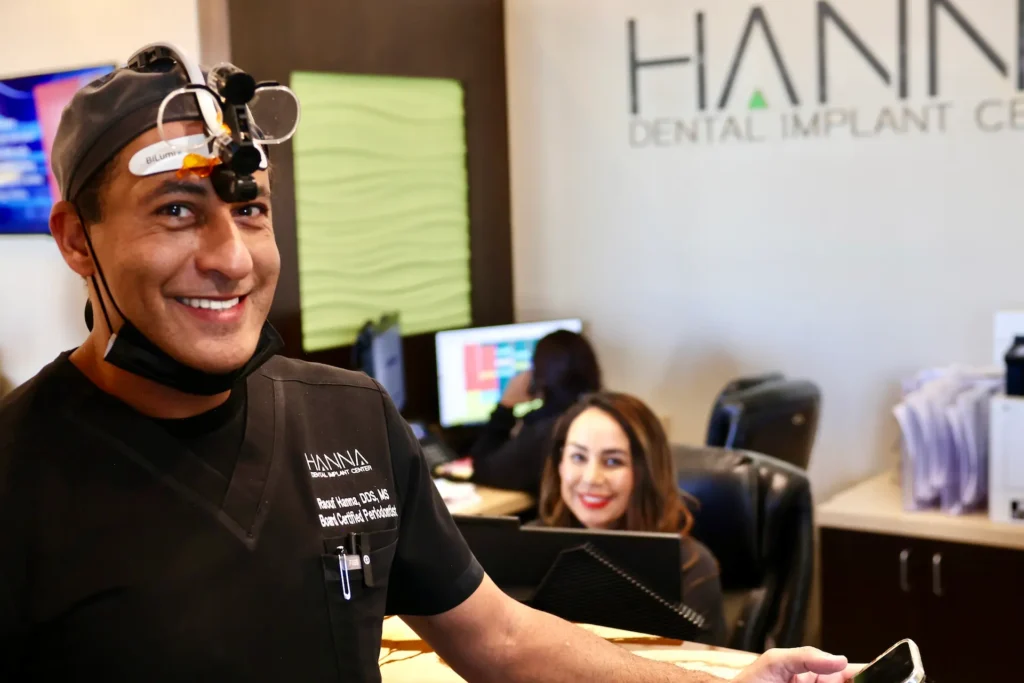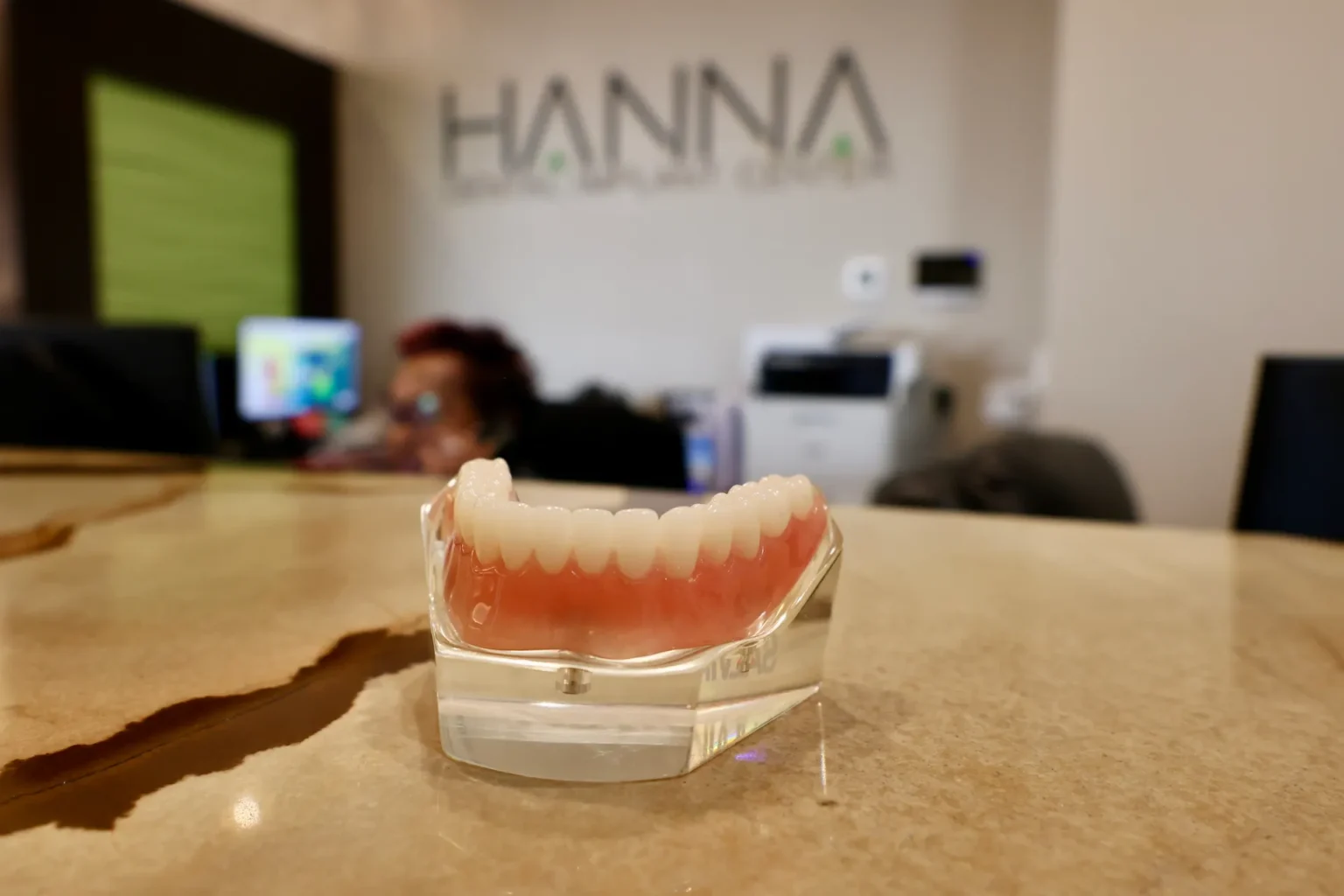When it comes to oral health, our gums play a vital role in supporting and protecting our teeth. But what happens when our gums start to recede?
Gum recession occurs when the margin of the gum tissue surrounding the teeth pulls back, exposing more of the tooth’s root. If left untreated, this can lead to serious oral health issues, including tooth sensitivity, increased risk for tooth decay, and even tooth loss.
Gum recession affects many people and is often a sign of underlying dental problems. Understanding its impact on dental health is the first step towards maintaining a healthy mouth and preventing complications. Many people are worried they may not be able to qualify for dental implants if they have gum recession, but dental specialists will be able to help in cases that have a more complex nature.
What Causes Gum Recession?
Gum recession can happen for several reasons, let’s take a look at some of these reasons and see what steps you can take to prevent it or seek treatment early. Here are some of the leading causes of gum recession:
- Gum Disease: This is the main cause of the gum recession. Bacterial buildup on your teeth can lead to gum inflammation and disease, causing the gums to pull away from the teeth.
- Aggressive Brushing and Flossing: Brushing your teeth too hard or using a hard-bristled toothbrush can wear away the enamel on your teeth and cause the gums to recede.
- Genetics: Sometimes, gum recession runs in families. If your parents have gum recession, you might also be more likely to experience it.
- Hormonal Changes: Changes in hormone levels, especially in women during puberty, pregnancy, and menopause, can make gums more sensitive and more likely to recede.
- Tobacco Use: Smoking or using other tobacco products can lead to a sticky plaque on the teeth that is hard to remove and can cause gum to recede.
- Teeth Grinding: Grinding your teeth at night can put too much force on the teeth, causing the gums to recede over time.
Knowing these causes can help you start to see why gum recession might happen and how some lifestyle changes or treatments can help prevent or slow down the process.
Signs and Symptoms of Gum Recession
Being able to recognize the signs and symptoms of gum recession can help you seek timely treatment. Here are some common signs to look out for:
- Tooth Sensitivity: If your teeth start feeling more sensitive, especially to hot or cold, it could be a sign of gum recession exposing the roots of your teeth.
- Longer Appearing Teeth: When gums recede, more of the tooth is exposed, making your teeth look longer than normal.
- Visible Roots: This is a clear indication of a gum recession. If you can see the roots of your teeth, it’s time to see a dentist.
- Redness or Inflammation: Gums might look red or swollen, which is a sign of irritation and possible recession.
- Bleeding: If your gums bleed when you brush or floss, this could indicate gum recession or disease.
- Bad Breath: Persistent bad breath or a bad taste in your mouth can be a sign of gum recession and the bacteria causing it.
Recognizing these symptoms early can make a big difference in treating gum recession and preventing further dental issues. If you notice any of these signs, it’s important to consult a dental professional for advice and treatment.
How to Prevent Gum Recession
Preventing gum recession is key to maintaining good oral health. Here are several steps you can take to protect your gums:
- Visit your dentist twice a year for check-ups and professional cleaning.
- Brush your teeth with fluoride toothpaste twice every day.
- Floss after every meal.
- Use a soft-bristled toothbrush and avoid brushing too hard.
- Avoid tobacco use.
These preventative measures can help you avoid gum recession and its associated health risks. You should know that maintaining good oral hygiene and seeking regular dental advice is crucial to keeping your gums healthy.
What are the Treatment Options for Gum Recession?
At Hanna Dental Implants, we offer various treatment options to address gum recession. These options are tailored to meet the specific needs of each individual. Here are some common treatments:
Gum Grafting
This procedure involves taking tissue from another area of your mouth, such as the roof of your mouth, and grafting it onto the receding gum line. This helps to cover the exposed tooth roots and stimulate the growth of new gum tissue.
Pinhole Surgical Technique (PST)
PST is a minimally invasive procedure that involves making small incisions in the gum tissue and gently repositioning it to cover the exposed root surfaces. This technique requires specialized training and can provide effective results.
Scaling and Root Planing
This is a deep cleaning procedure where the dentist cleans plaque and tartar from the teeth and beneath the gum line. It helps to heal gum tissue and can prevent further recession.
Guided Tissue Regeneration
This procedure involves placing a small piece of material between the bone and gum tissue to help regenerate any lost tissue and bone. It can be used in conjunction with grafting to encourage natural regeneration.
Use of Desensitizing Agents or Toothpaste
For those experiencing sensitivity due to gum recession, desensitizing agents or special toothpaste may be recommended to help reduce discomfort.
Each treatment option has its benefits and may be recommended based on the severity of the gum recession and the individual’s overall oral health.
Dental Implants
Dental implants act as sturdy placeholders, preventing the negative consequences of gum recession and bone loss. Not only do they stimulate the surrounding jawbone and gum tissue, but they also help maintain their health and integrity.
By taking a proactive approach to oral health with dental implants, we can prevent future complications and the need for additional dental work. Furthermore, our durable dental implants offer a long-term solution that is known for its reliability and longevity.
With proper care and maintenance, they can last a lifetime, providing stability and peace of mind. Unlike other tooth replacement options that often require frequent adjustments or replacements, dental implants offer a stable and reliable solution, reducing the hassle and cost of ongoing dental care. Rest assured, at Hanna Dental Implants, our experienced team is dedicated to providing you with the highest level of care and ensuring the best outcomes for your oral health.

Take Charge of Your Oral Health: Consult Our Dental Professionals Today!
Gum recession is a common dental issue that can lead to tooth sensitivity, gum disease, and even tooth loss. Early intervention and proper treatment are essential for preventing further damage and improving oral health.
At Hanna Dental Implants, our experienced dentists are dedicated to providing personalized care and effective implant treatment plans for gum recession. Our team will tailor a treatment plan to fit your specific needs.
Schedule a consultation with us today to get your full smile back!
Frequently Asked Questions
Can receding gums be restored?
Yes, receding gums can be restored to some extent through various dental treatments. Options like gum graft surgery, the pinhole surgical technique, and guided tissue regeneration can help cover exposed roots or regenerate lost gum tissue. However, the best approach depends on the severity of the recession and your overall oral health.
At what age does a gum recession start?
Gum recession can start at any age but is more common in adults over 40. However, it’s not exclusively an age-related issue; factors like genetics, oral hygiene, and lifestyle choices play a significant role.
Why are my gums receding in my 20s?
Gum recession in your 20s can occur due to several reasons, including aggressive brushing, poor oral hygiene, genetics, tobacco use, and even piercings in the lip or tongue that rub against the gums. It’s important to address these factors and consult a dental professional for an appropriate treatment plan.
How can I push my gums up naturally?
While you can’t “push” gums up naturally to cover exposed roots, you can take steps to prevent further recession and improve your oral health. These include practicing good oral hygiene, using a soft-bristled toothbrush, brushing gently, flossing daily, and avoiding tobacco products, as well as visiting your dentist regularly for check-ups and professional cleanings.
Can I get dental implants if I have gum recession?
Dental implant specialists will be able to address more complex cases such as those with gum recession. Schedule a consultation with our friendly experts at Hanna Dental, and find out how we can help you get the smile of your dreams.



